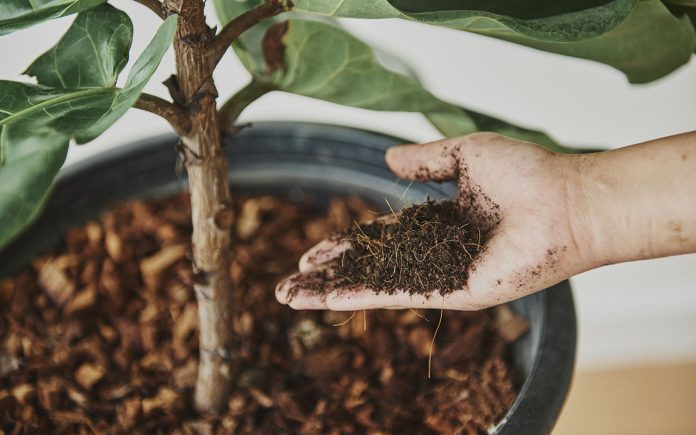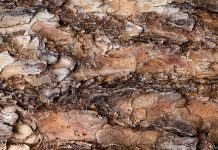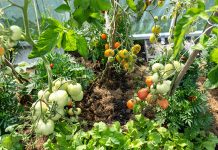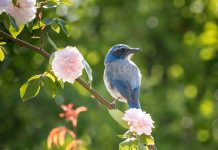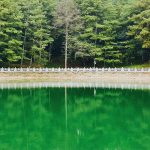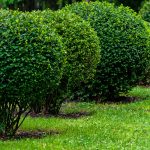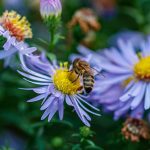The art of bonsai requires special care because it is miniaturized plants that grow in trays, that is, in conditions that are not natural for the plant. In addition to pruning to shape them and root trimming to keep them small, the conditions of the soil in which they grow must be tightly controlled. This cultivation practice dates back to Chinese culture 2,000 years ago, and to this day it still has considerable relevance, both in Asia and worldwide.
One of the components used by bonsai experts to control soil conditions is akadama, which not only has important properties for bonsai, but can also be used for other plants. If you want to know more about this substrate, we invite you to read this article from EcologíaVerde where we will explain what akadama is and what it is for, as well as its characteristics.
You may also be interested in: Kiryuzuna: what it is and what it is for
What is akadama
Akadama, or akadama tsuchi, is a type of substrate used for plants. They are small fragments of pumice lava gathered into grains, consisting of inorganic clay of volcanic origin. These are the result of the foam generated by the lava as it cools and solidifies. It is also known as pumice stone, but it is not one of those that can be easily obtained, because akadama has a very particular origin.
They come from Japan, a country where there is great volcanic activity and where a large amount of this material is produced. Many akadama preparations even come from the famous Mount Fuji, increasing the value of this special substrate.
Here are some characteristics of the akadama:
- Akadama means red ball in Japanese, although the color is more ochre.
- There are akadamas of different hardnesses. The deeper it goes, the greater it will be. The most sought after are the hard ones because they have a longer life span than the soft akadamas, which tend to become a paste when they are in constant contact with water.
- There are varieties ranging in size from 1 to 25 millimeters, distinguishing between fine, small, medium or large grain.
- It has a pH of 6.5 to 6.8, tending to be slightly acidic.
- Some baked akadamas can be found to harden them and enhance the properties. This variety is known as yaki akadama tsuchi.
You may be interested in this article on the types of substrates. In addition, if you want to buy this soil to improve the substrate of your plants, you can buy it here.
What is the akadama for?
The akadama is used for gardening because of its unique characteristics, used by Japanese bonsai masters for thousands of years.
- Since it is lined with small holes, akadama helps retain the water needed by plants. In addition, this retention capacity helps to release the necessary nutrients, and maintains good ventilation in the substrate. The irregularity that the granules form between them also enhances these abilities.
- The akadama promotes the filtration of excess water and prevents the roots of the plants from rotting due to waterlogging.
- When the akadama gets wet it turns a darker color, so it can also be used as a watering indicator. We recommend you read How to water a bonsai.
- The most common use is as a substrate for bonsai professionals, being the best material for growing bonsai. But it can also be used for other plants that grow inside containers, or for cacti and succulents that require good drainage.
- Another important property of this substrate is as a stimulator for root growth, promoting the overall growth of the plant.
Discover 19 types of bonsai.
How to Use Akadama for Plants
Despite how exotic the akadama may seem, today it is exported and can be found in specialized stores for bonsai, or for horticulture.
- It can be added as a completely akadama substrate, or mixed into parts substrate prepared for bonsai. The latter is the most recommended.
- The akadama should always be washed with water and then dried thoroughly, before adding to any mix or pot.
- It is important to consider that the proportion of akadama to be placed should be high if the environment is humid, this to promote the filtration of excess water.
There are endless mixtures that can be used to incorporate the akadama depending on what we want to obtain, but also depending on the materials we have available. This is a recommendation that promotes root aeration and proper development, good drainage and nutrient supply:
- 1 part of akadama
- 1 part pumice stone
- 1 part lava
Another mixture is as follows:
- 3 parts of akadama
- 1 part clay soil
- 1 part Fuji floor
If you want to add fertilizer, we have this mixture:
- 1/2 of akadama
- 1/4 pot compost. Discover Organic Fertilizer: what it is, types, benefits and how to make it.
- 1/4 of soft gravel
This mixture can also be used to prevent water rot. It is used for transplanting bonsai into larger containers:
- 80% akadama
- 20% river sand
- 10% Bamboo Charcoal
The procedure for combining them is as follows, and is intended to incorporate air so that it is not compact:
- In a bucket the two components that are not akadama will be incorporated, this one is added to the end.
- They are mixed and kneaded well to remove possible clods.
- Then add the akadama and mix it again well to finish placing the desired plant.
It is important to mention that akadama can be expensive because it is an imported product. If you want to save on use, you can add only one bed of akedama to the bottom of the container to serve as a filter. On top of it you should place the rest of the substrate you have available. You can also add it to the bottom of pots that do not have a hole. To keep Akadama’s properties functional, any substrate mixture containing it must be replaced with a new one every two years.
Now that you know what akadama is and what it is for, we recommend this other article from EcologíaVerde on What is diatomaceous earth and what it is for.


